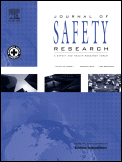
JOURNAL OF SAFETY RESEARCH
Scope & Guideline
Exploring innovative strategies for risk management.
Introduction
Aims and Scopes
- Human Behavior and Safety:
Investigations into how individual behaviors, attitudes, and psychological factors influence safety practices and risk-taking, particularly in driving and occupational settings. - Technological Innovations in Safety:
Research on the effectiveness and implications of new technologies, such as automated driving systems, safety features in vehicles, and safety training tools. - Injury Prevention and Risk Assessment:
Studies focusing on identifying risk factors associated with various types of accidents, injuries, and fatalities, and evaluating the effectiveness of prevention strategies. - Workplace Safety and Health:
Exploration of safety management systems, occupational health issues, and interventions aimed at reducing workplace injuries and promoting employee well-being. - Traffic Safety and Transportation:
Research on factors affecting road safety, including driver behavior, traffic regulations, and the impact of infrastructure on accident rates. - Vulnerable Road Users:
Examination of the safety concerns and injury patterns related to pedestrians, cyclists, and other road users who are at higher risk of accidents.
Trending and Emerging
- Impact of COVID-19 on Safety Practices:
A significant increase in research examining how the COVID-19 pandemic has influenced safety behaviors, workplace safety protocols, and driving patterns, reflecting the urgent need for adaptive strategies. - Integration of Artificial Intelligence and Machine Learning:
Growing interest in utilizing AI and machine learning technologies to enhance safety systems, improve predictive modeling for accidents, and analyze behavioral data. - Focus on Mental Health and Safety:
An emerging trend that connects mental health with safety performance, emphasizing the importance of psychological well-being in preventing workplace accidents and improving driving behavior. - Sustainable and Inclusive Safety Practices:
Research exploring the intersection of safety with sustainability and social equity, focusing on how safety measures can be inclusive and environmentally responsible. - Behavioral Interventions for Risk Reduction:
A rise in studies examining behavioral interventions aimed at reducing risky behaviors among drivers, workers, and vulnerable populations, emphasizing psychology-based strategies. - Data-Driven Safety Management:
An increasing reliance on data analytics and real-time monitoring systems to inform safety management, improve response strategies, and enhance overall safety performance.
Declining or Waning
- Traditional Safety Management Approaches:
Research focusing solely on conventional safety management practices without integrating modern technologies or behavioral insights has decreased, as newer methodologies gain traction. - Static Risk Assessments:
The reliance on static models for risk assessment is waning in favor of dynamic approaches that incorporate real-time data and adaptive systems. - Injury Analysis without Contextual Factors:
Investigations that analyze injury data without considering the broader social, economic, and environmental contexts are becoming less common, as there is a growing emphasis on holistic approaches. - Generalized Safety Training Programs:
The decline in studies evaluating generic safety training programs, with a shift towards research that assesses tailored and context-specific training interventions. - Purely Quantitative Studies:
A reduction in purely quantitative research designs in favor of mixed-methods approaches that incorporate qualitative data to provide deeper insights into safety behaviors.
Similar Journals
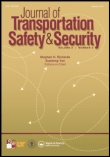
Journal of Transportation Safety & Security
Pioneering research for safer journeys.The Journal of Transportation Safety & Security (ISSN: 1943-9962; E-ISSN: 1943-9970), published by Taylor & Francis Inc, stands as a pivotal resource for professionals and researchers in the fields of safety research and transportation. Since its inception in 2009, this journal has delivered rigorous peer-reviewed articles that explore critical issues relating to safety and security within the transportation sector. With an impressive impact factor reflecting its scholarly significance—ranking Q1 in Safety Research and Q2 in Transportation as of 2023—this journal occupies a unique position in the academic landscape, encouraging innovation and collaboration among researchers dedicated to improving safety measures. The Scopus rankings further affirm its status, placing it 17th out of 109 in Safety Research and 49th out of 141 in Transportation. Readers can expect contemporary discussions and comprehensive reviews tailored to both practitioners and academics alike, effectively bridging the gap between theory and application. Explore the Journal of Transportation Safety & Security to contribute to a safer and more secure transportation environment.

PROCESS SAFETY AND ENVIRONMENTAL PROTECTION
Unraveling the complexities of risk and reliability in engineering.PROCESS SAFETY AND ENVIRONMENTAL PROTECTION, published by Elsevier, is a premier academic journal dedicated to advancing the fields of chemical engineering, environmental science, and safety management. With an impressive impact factor, this esteemed journal undergoes a meticulous peer-review process and serves as a vital platform for researchers, professionals, and students seeking to disseminate cutting-edge research and innovative practices. Submissions are welcome in a wide scope of topics related to safety, risk, reliability, and environmental engineering, demonstrating its influence as a Q1 journal across multiple categories, including Environmental Chemistry and Safety, Risk, Reliability and Quality. By providing a rigorous analysis of current challenges and solutions in the domain since its inception in 1990, it continues to foster interdisciplinary collaboration and practical applications in the United Kingdom and beyond. With the journal not currently offering Open Access options, subscribers gain exclusive access to pivotal insights that shape industry standards and drive advancements in sustainable practices.
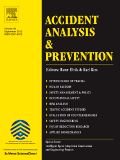
ACCIDENT ANALYSIS AND PREVENTION
Leading the Charge in Accident AnalysisACCIDENT ANALYSIS AND PREVENTION is a premier journal dedicated to the multidisciplinary exploration of the factors contributing to accidents and strategies for their prevention. Published by PERGAMON-ELSEVIER SCIENCE LTD in the United Kingdom, this esteemed journal has made significant strides since its inception in 1969, with ongoing publications until 2024. With a notable impact factor and recognition as a Q1 journal across multiple categories including Human Factors and Ergonomics, Law, and Public Health, it stands out in the field. Its Scopus rankings further underline its excellence, placing it within the top tiers of safety, risk, and reliability research. Researchers, professionals, and students are encouraged to engage with this journal to stay at the forefront of accident prevention methodologies and research advancements, fostering an environment of safety and risk assessment innovation.
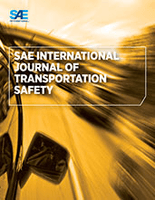
SAE International Journal of Transportation Safety
Pioneering Research for a Safer JourneySAE International Journal of Transportation Safety is a premier publication dedicated to advancing the field of transportation safety through rigorous research and analysis. Published by SAE International, this journal serves as a crucial platform for researchers and professionals aiming to enhance safety practices across various domains, including human factors, mechanical engineering, and safety research. With an ISSN of 2327-5626 and E-ISSN 2327-5634, the journal emphasizes the importance of empirical studies and best practices that address contemporary challenges in transportation safety. Although it operates under traditional subscription models, the journal is esteemed for its selective peer review process, ensuring the highest quality of published work. Currently positioned in the Q3 quartile across multiple categories in 2023, the journal is ranked within the lower percentiles of its field, indicating opportunities for growth and increasing visibility. With an audience that includes academic researchers, policy makers, and students, the SAE International Journal of Transportation Safety plays an essential role in shaping the future of safe transportation practices globally.
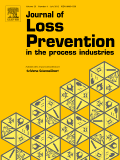
JOURNAL OF LOSS PREVENTION IN THE PROCESS INDUSTRIES
Empowering industries through cutting-edge risk management research.The Journal of Loss Prevention in the Process Industries, published by Elsevier Science Ltd, stands as a vital platform for advancing knowledge and practice in risk management and safety within the fields of chemical engineering, industrial and manufacturing engineering, and beyond. With an H-Index reflecting significant scholarly influence, this journal features a diverse scope, addressing critical issues from process safety and reliability to innovative solutions for energy efficiency. Ranking in the second quartile (Q2) across several categories, including Control and Systems Engineering and Safety, Risk, Reliability and Quality, it highlights the interdisciplinary nature of loss prevention strategies. Researchers and professionals can access this journal through subscription, ensuring they stay at the forefront of developments from 1988 to 2024. As a hub of cutting-edge research, the journal not only aims to disseminate high-quality studies but also fosters a community dedicated to enhancing safety and operational excellence in process industries worldwide.
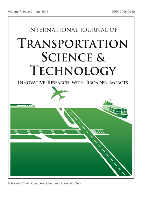
International Journal of Transportation Science and Technology
Pioneering insights for the future of mobility and infrastructure.The International Journal of Transportation Science and Technology, published by KEAI PUBLISHING LTD, stands as a pivotal resource in the fields of transportation, automotive engineering, civil and structural engineering, and policy management. With a robust Open Access model since its inception in 2012, this journal provides unparalleled visibility to research that impacts real-world transportation systems and infrastructure. The journal proudly holds a Q1 category ranking in crucial engineering fields, reflecting its high impact and quality of published research. Its diverse scope and comprehensive coverage make it an essential platform for researchers, professionals, and students alike who are eager to contribute to the advancement of transportation science and technology. With impressive Scopus rankings underscoring its relevance in environmental science and social sciences related to transport, the International Journal of Transportation Science and Technology continues to foster innovation and influence policy development globally, addressing the challenges of modern transportation systems.

INTERNATIONAL JOURNAL OF CRASHWORTHINESS
Exploring the Future of Structural PerformanceThe INTERNATIONAL JOURNAL OF CRASHWORTHINESS, published by Taylor & Francis Ltd, is a prestigious journal established in 1996 that focuses on the critical field of crashworthiness engineering across several domains, including industrial, manufacturing, mechanical engineering, and transportation. With an impressive Q2 ranking in both Industrial and Manufacturing Engineering and Mechanical Engineering, as well as a Q3 ranking in Transportation, this journal serves as a vital platform for disseminating innovative research and cutting-edge developments. Although currently not an open-access publication, it provides invaluable insights for researchers, professionals, and students seeking to enhance safety and structural performance in crash-related scenarios. With the ISSN 1358-8265 and E-ISSN 1754-2111, the journal continues to facilitate important conversations aimed at advancing the field and improving public safety. Stay informed with the latest findings and contribute to this evolving discipline by exploring the INTERNATIONAL JOURNAL OF CRASHWORTHINESS today.
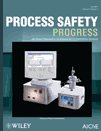
PROCESS SAFETY PROGRESS
Transforming challenges into safety solutions.PROCESS SAFETY PROGRESS is a distinguished journal published by WILEY, focusing on the critical intersections of chemical engineering and safety, risk, reliability, and quality. Established in 1993, this peer-reviewed journal serves as a significant platform for disseminating high-quality research findings and innovative solutions in process safety. With an established impact within its fields, it holds a Q3 categorization in both Chemical Engineering and Safety, Risk, Reliability and Quality as of 2023. The journal's rigorous manuscript evaluation process, combined with its emphasis on emerging challenges and solutions in industry practices, makes it a crucial resource for researchers, industry professionals, and students alike. Although not Open Access, PROCESS SAFETY PROGRESS continues to enhance its visibility through its indexed presence in Scopus, where it ranks in the 50th percentile in its categories. As it converges to its 2024 volume, the journal remains committed to promoting advancements in the field and fostering a safer environment in chemical process engineering.

Workplace Health & Safety
Fostering a culture of safety through open access knowledge.Workplace Health & Safety is a prominent peer-reviewed journal published by SAGE Publications Inc, aiming to advance the field of occupational health and safety through rigorous research and practical applications. With an impact factor reflecting its significant contributions to the fields of nursing and public health, this journal ranks in the second quartile (Q2) for both Nursing (miscellaneous) and Public Health, Environmental and Occupational Health, showcasing its standing among peers. Since its inception in 2003, the journal has been committed to disseminating insights that enhance workplace safety and health practices, making it a vital resource for researchers, professionals, and students alike. Readers can access a wealth of knowledge through its open access option, fostering a broader understanding and discussion around critical health and safety issues in various work environments. With a consistent commitment to excellence and relevance, Workplace Health & Safety is essential for anyone dedicated to improving workplace environments and promoting health and safety standards.

RISK ANALYSIS
Pioneering Research at the Intersection of Risk and SafetyRISK ANALYSIS is a premier journal published by Wiley, focusing on the critical intersection of safety, risk, reliability, and quality within the fields of engineering and physiology. With a strong standing reflected in its Q1 category ranking in Safety, Risk, Reliability and Quality and Q2 in Physiology (medical), this journal is a vital resource for researchers, professionals, and students eager to stay informed on the latest methodologies, theories, and applications surrounding risk assessment and management. Since its inception in 1981, RISK ANALYSIS has been instrumental in shaping the discourse in its fields, garnering a robust reputation verified by its high rankings on Scopus, where it is positioned in the 85th percentile in Safety and the 77th percentile in Medicine. Though it does not currently offer Open Access options, the journal remains essential for those committed to advancing their understanding of risks associated with complex systems. For more insights, RISK ANALYSIS is available to readers throughout its converged years extending to 2024, solidifying its role as a foundational journal for impactful research.